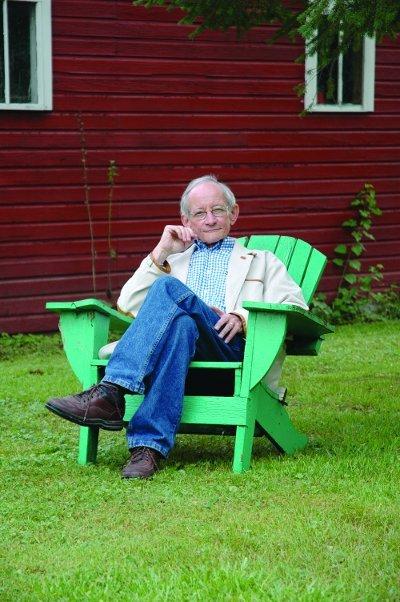More than 700,000 fans are expected to descend on the USTA Billie Jean King National Tennis Center in Flushing Meadows, New York, for the final chapter of this year’s Grand Slam tennis tournament.
The US Open tennis tournament, a two-week sports and entertainment extravaganza that begins the week leading into Labor Day weekend, has become the highest-attended sporting event in the world.
In recent years, the US Open has been plagued by extremely hot end-of-summer weather.
Just three years ago Hurricane Irene caused a delay by sweeping through New York one day before the official start.
Rainouts are such a possibility that plans are underway for the construction of a retractable roof on the main stadium.
Once again, I attended the first five days of this spectacular event and with the singular exception of one day of oppressive heat and humidity, the weather conditions were unseasonably balmy, with cool breezes and temperatures mostly in the high 70s.
These conditions were ideal for both spectators and players. As for watching the matches in person, the choices are so numerous that it is almost impossible to keep abreast of the fast-paced action.
The star players – like Maria Sharapova, Roger Federer, Serena Williams and Novak Djokovic, to name a few – are mostly playing to the largest crowd at the Arthur Ashe Stadium, with a seating capacity of 23,771, making it the largest tennis venue in the world.
The most fun can be had watching matches at many courts where the seating capacity barely exceeds 1,000, with players that are not as highly ranked but are often more competitively even.
To be sure, it was fun to watch John Isner, the highest ranked American male player seeded at No. 13, going against fellow American Marcos Giron in the first round who happened to be seeded No. 419, but the outcome was almost a foregone conclusion, with Isner winning in three straight sets.
Then there was the Cinderella story of 15-year-old American girl Catherine (CiCi) Bellis, a native of Atherton, Calif., beating twelfth-seeded Slovakian Dominika Cibulkova in three sets, becoming the youngest female player to win a US Open match since Anna Kournikova in 1996.
The upset victory by American teenager Bellis made for great headlines and reams of media stories. But sometimes you get lucky by stumbling upon an unheralded match where the play is equally exciting and unpredictable.
Such was the case on a Wednesday night on Court 13, which has a seating capacity of only 584. The match-up was nearly even, with Israel’s Dudi Sela seeded at No. 83, taking on Argentina’s Carlos Berlocq seeded at No. 63.
Sela, relatively short for a tennis pro, lost the first set 6 games to 1, but came roaring back in the second set to win 6 games to 3, and then won the next two sets to claim the match. Given the small size of Court 13, you couldn’t ask for a better view of a match that was not even televised.
Everyone keeps talking about the dire straits of American men’s tennis, but no one has answers.
Where are today’s Pete Sampras, Andre Agassi, or even Andy Roddick, the last American to win the US Open?
Roger Federer claimed the US Open championship five years in a row after Roddick won in 2003, which now seems like ancient history.
At a press conference following his second round victory over German Jan-Lennard Struff, John Isner was asked about the state of American tennis, and could only reply that he’s not worried about the “whole state of American tennis. I’m just doing what I can do as best as I can. Simple as that.”
Armed with a credential, a member of the press can access most areas of the tennis venues with ease, including the Arthur Ashe Stadium with its reserved seating and expensive luxury suites held by the corporate sponsors.
The US Open is more than just a sporting event; it’s more like a festival, with an emphasis on food and entertainment. Inside Ashe Stadium, if you’re so lucky to have courtside seats or access to the suites, you can dine on fine cuisine prepared by celebrity chefs like David Burke and Masaharu Morimoto.
The club level of Ashe Stadium also now features $14 pastrami sandwiches from the famous Carnegie Deli.
Those with more refined appetites can visit the Oyster Bar, which sells one-ounce American caviar for $59 and oysters for $24. I was afraid to ask how many oysters you get for that price. If you have to ask, you can’t afford them anyway.
The culinary delights of the US Open are best expressed by the easily accessible and perennially popular Food Village, a collection of specialty food stands.
New concessions this year included Richard Sandoval’s Maya, serving classic Mexican flavors with a twist, and the Pat LaFrieda Meat Company, featuring its signature steak sandwiches.
Food trucks have become increasingly popular, and so it is only natural that the US Open has the first-ever on grounds food truck located at Court 17, the Moms Grilled Cheese Truck, which is no ordinary cheese vendor.
Fitting to the US Open, the vendor offers local, artisanal breads, meats and cheeses in its gourmet grilled cheese menu.
Opening night provided entertainment with a concert-like appearance by Fitz and the Tantrums, an American neo-soul and indie pop band.
If like me you don’t immediately recognize the band, their songs “Out of My League” and “The Walker” are familiar for perpetual radio play.
My fervent wish is for John Isner to make it pass the third round, or for any American male player to get closer to the finals.
As of now, American victory rests with Serena Williams looking for a third straight championship.
The US Open runs until Monday, Sept. 8, and is being televised at various times by ESPN, CBS and Tennis Channel.
Tim Riley writes film and television reviews for Lake County News.









